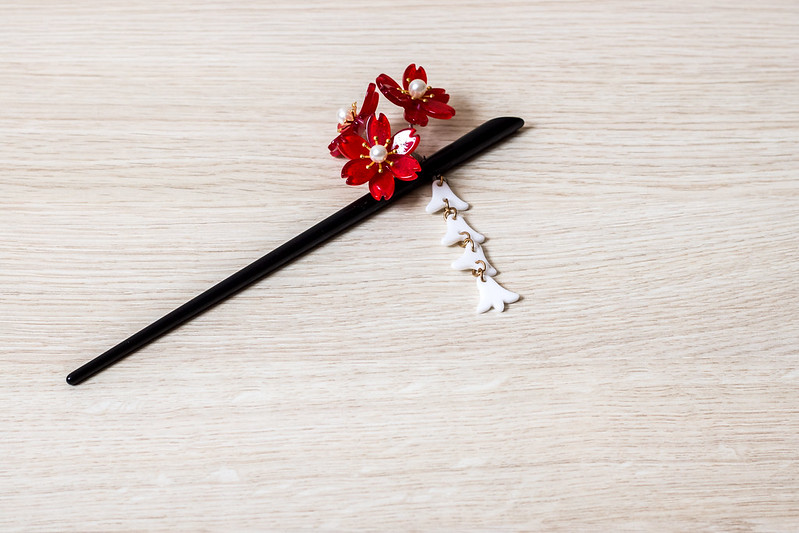
The Intricate, Stylish Kanzashi and Tsumami Zaiku
Kanzashi are ornamental hairpins that crown the look of traditional Japanese kimonos. The term kanzashi is also synonymous to folded cloth flowers that traditionally adorn tsumami kanzashi as well as the technique used in making the cloth flowers.
The origins of kanzashi can be traced back to the Jōmon period when people wore them in their hair using a single rod or stick. Kanzashi was considered to have mystical powers to ward off evil spirits. The Nara period saw a variety of Chinese cultural influences that were introduced to the Japanese culture. During the Heian period, it became fashionable for women to wear their hair long and tied low in the back rather than putting the hair up traditionally. Kanzashi became a general term for any type of hair ornament. The Azuchi-Momoyama period saw a further change in hairstyles such as nihongami (typical Japanese hair) and the taregami (long and straight). Both hairstyles had more use for hair ornaments. During the Edo period, the kanzashi became even more popular as hairstyles became more elaborate and complicated.
Kanzashi
Artisans of the Edo period began to produce more finely crafted kanzashi to accentuate the kimono and various hairstyles. Aside from just being beautiful accent pieces, Kanzashi were even made to be defensive weapons and oftentimes indicated the status of a woman. Kanzashi artisans usually apprentice for five to ten years to establish themselves as independent professional artisans of tsumami kanzashi in Japan. Tsumami kanzashi has been officially designated as a traditional Japanese handcraft in the Tokyo region since 1982.
Tsumami zaiku are typically made with small pieces of square cloth that are pinched and folded using fingertips and pinchers, much like making origami. The folded cloths are combined to form ornaments. There are two basic pinching techniques: “ken-tsumami” (sword pinching) and “maru-tsumami” (round pinching). Flowers are a typical shape made by tsumami zaiku but other shapes can be created with the technique depending on ones creativity and imagination.
Want to make your own kanzashi? Check out this video tutorial:
